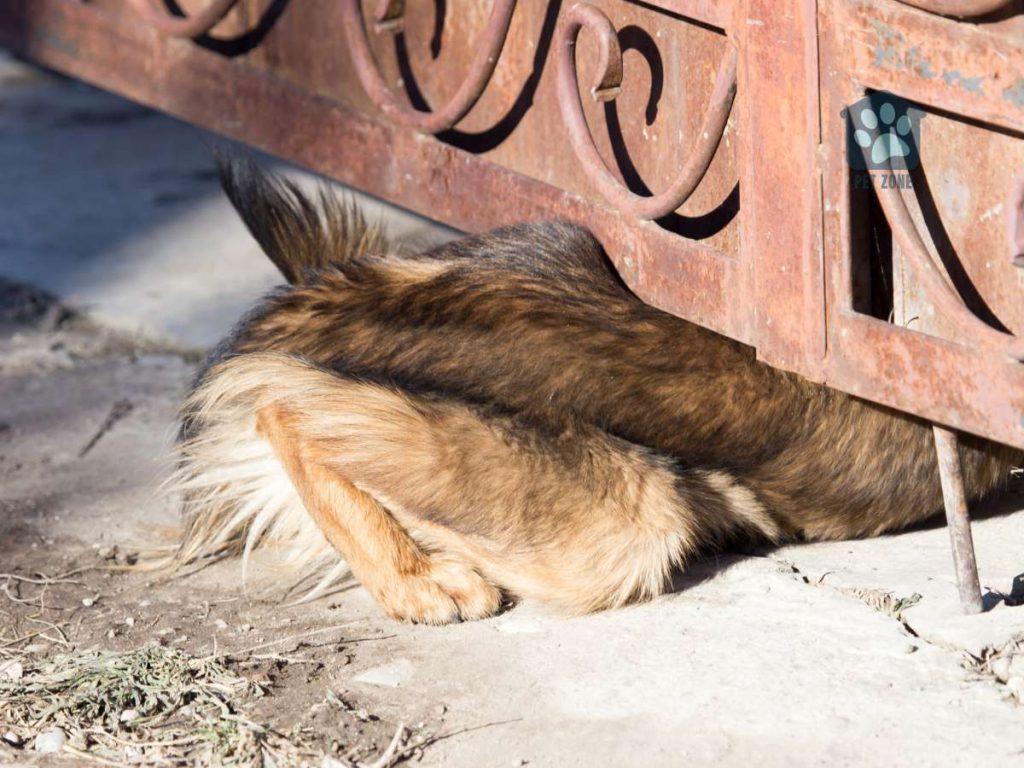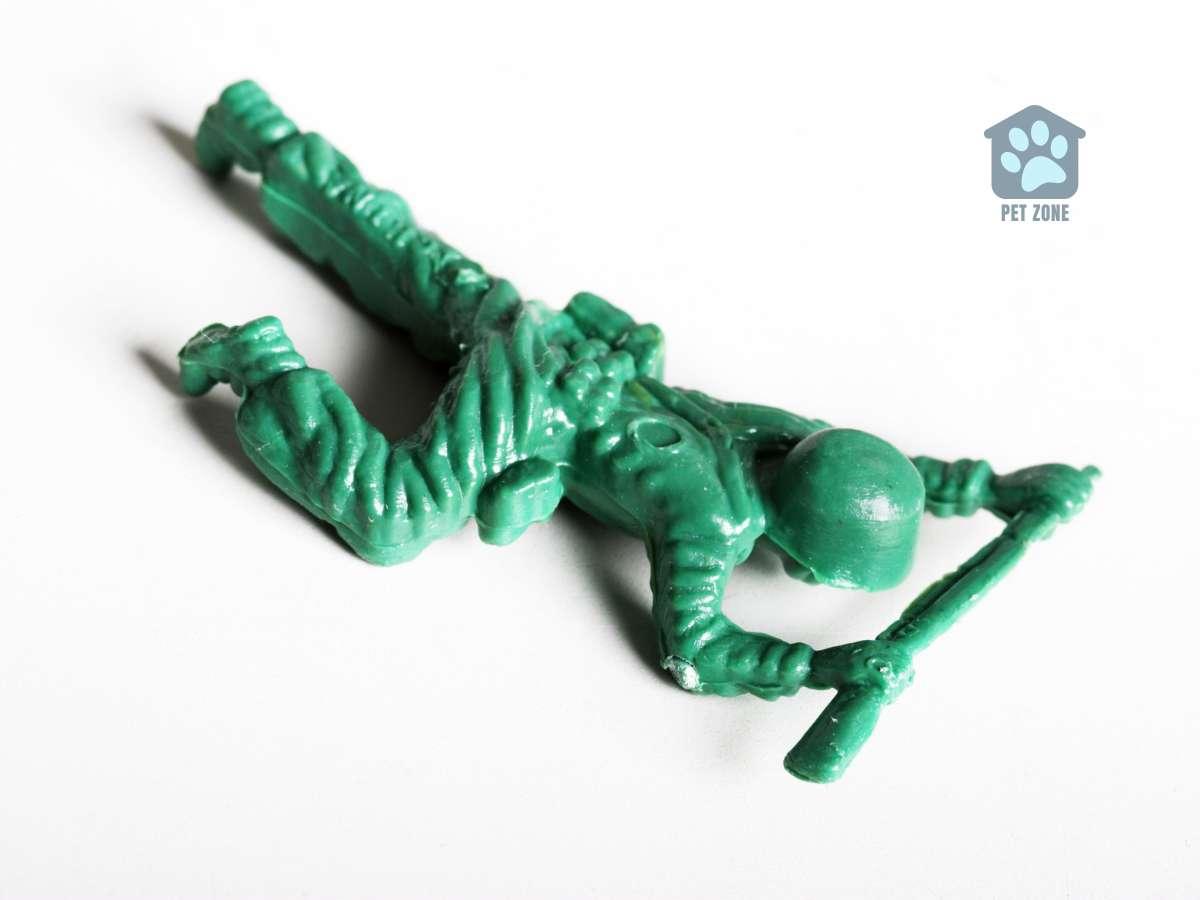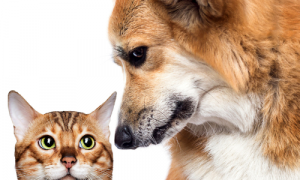Estimated reading time: 8 minutes
Have you ever observed your canine friend crawling on its belly like an army soldier, and wondered what’s going on?
From expressing playfulness, showing submission, and dealing with an itch, to more serious medical issues, this behavior can signify a lot. You’ll be surprised at the many different reasons why dogs may engage in this curious behavior!
Key Takeaways
What is the Army Crawl for Dogs?
Army crawling in dogs refers to a distinct movement where dogs lay their belly low to the ground and propel themselves forward, similar to the way soldiers crawl in the field. This term derives from the resemblance to a soldier or commando navigating through low-clearance areas.
How Do Dogs Army Crawl?
When a dog performs an army crawl, it uses a lot of its core strength. The dog positions itself low to the ground and propels forward with the use of its limbs. It’s almost like watching a miniature soldier on a mission, hence the term ‘army crawl.’ This crawling action uses a lot of the dog’s physical prowess and agility, and it’s a sight that can often be quite amusing to many dog owners.
Why Do Dogs Army Crawl?
There are several reasons why your dog may engage in army crawling. For some, it’s a cute trick or a way to play, for others, it might be a form of submissive behavior to a more dominant figure. This can be another dog, a human, or even something smaller that has intrigued them. Another reason could be due to irritation or an itchy spot on their belly, prompting them to crawl in an attempt to soothe the itch.
Is Army Crawling in Dogs a Normal Behavior?
In most cases, army crawling is a normal behavior in dogs. It’s often seen during play or when the dog is attempting to scratch a hard-to-reach spot. However, if this behavior becomes frequent or if the dog shows signs of distress while army crawling, it may be a sign of a health concern such as fleas, allergies, or a more serious medical condition.
Can All Dogs Army Crawl?
While many dogs can and do perform the army crawl, not all dogs may engage in this behavior. It often depends on the breed of dog and owner, as some dogs are naturally more prone to this behavior while others may need training or encouragement to do so. Additionally, the size of the dog may also play a role, as it’s often more common in smaller breeds or puppies, although it’s not rare for bigger dogs to engage in army crawling too.
Causes of the Army Crawl Behavior in Dogs
Understanding the reasons behind your dog’s army crawl behavior can help you identify the source of their actions and respond accordingly. The motivations for this behavior can range from something as benign as playfulness to more serious issues like health concerns.
Can Irritation or Itching Cause Army Crawl Behavior in Dogs?
Yes, irritation or itching is one of the common causes of the army crawl behavior in dogs. If your dog has a rash or itchy spot, particularly on their belly, they may resort to army crawling to relieve the discomfort.
Fleas, allergies, and skin conditions are frequent culprits. The irritated area should be easily identifiable and you can often treat it with over-the-counter creams or medications. However, if the irritation persists, you may need to go to the vet.
If your pet is experiencing hot spots, constant scratching, stomach discomforts, or paw licking, check out our recommended test!
If your pet is experiencing hot spots, constant scratching, stomach discomforts and paw licking, this test is for you.
These symptoms of discomfort can develop over time if your pet has sensitivities to specific foods in their diet and/or items found in their surrounding environment.
Identifying the source of their intolerances is the first huge step towards alleviating your dog or cat’s symptoms.
- Painless, non-invasive, at-home testing
- Test for 375+ food and environmental items
- Results within 7 days of your sample's arrival
Is Separation Anxiety a Reason for Army Crawl Behavior in Dogs?
Although less common, separation anxiety can also lead to army crawl behavior in dogs. Dogs with separation anxiety can display a variety of unusual behaviors, and crawling on their belly may be one way they express their stress or fear. It’s crucial to identify the source of their anxiety and work towards creating a safe and comfortable environment for your pet.
Is Army Crawling in Dogs a Sign of Submissive Behavior?
Army crawling can indeed be a form of submissive behavior in dogs. Dogs often use body language to communicate their feelings, and army crawling can be a way of showing deference to a more dominant figure. This could be towards another dog, a human, or any creature that the dog perceives as superior or intimidating.
Can the Army Crawl Be a Cause for Concern?
In some cases, army crawl behavior may indicate a serious medical problem. If your dog suddenly starts crawling and it is accompanied by other signs of discomfort, such as excessive licking, loss of appetite, or changes in behavior, it may be time to consult with a vet. Conditions like hip dysplasia, arthritis, or other musculoskeletal issues may cause a dog to army crawl.
Can Army Crawling in Dogs be a Breed-Specific Behavior?
While any dog, regardless of breed, can engage in army crawling, it may be more prevalent in some breeds than others. Dogs with agility training or breeds known for their nimbleness and flexibility may be more likely to display this behavior. However, it’s not rare for any breed to army dog crawl, especially when they’re feeling playful or seeking attention.

Training Your Dog to Army Crawl
Training your dog to perform various tricks and commands not only strengthens the bond between you but also stimulates the dog’s mental and physical abilities. One such skill is the army crawl, which may look like a cute trick at first but can have practical uses as well.
How Can You Train Your Dog to Army Crawl?
Training your dog to army crawl involves patience, positive reinforcement, and consistency. Start by getting your dog into a ‘down’ position. Then, hold a treat just out of their reach and use a command such as “crawl.” Encourage your dog to crawl forward to reach the treat. Remember to use a hand signal and give a treat as a reward each time your dog makes a crawling move. Practice daily and keep sessions short and positive.
Is Army Crawling Safe for Dogs to Do?
In general, army crawling is safe for dogs. However, it’s important to watch for any signs of discomfort or distress. If your dog is large or has joint issues, this movement may put a strain on their body. Always consult with a vet if you’re unsure.
Benefits of the Army Crawl
Is Army Crawling a Cute Trick or Actually Useful for Dogs?
While army crawling is often seen as a cute trick, it’s actually good exercise and can be quite useful for dogs. This crawling behavior can provide a way for dogs to reach into tight spaces or navigate lower clearances, which can be particularly useful if the dog ever needs to crawl into an enclosed space. Plus, it’s a great way to burn off some energy and keep your dog engaged and mentally stimulated.
What are the Benefits of Teaching Your Dog to Army Crawl?
Teaching your dog to army crawl has its merits. Beyond being an adorable trick to show off to friends and family, it also provides physical benefits for your dog. The crawling action helps to keep your dog fit and active. It can also serve as a mental challenge, teaching your pet to follow commands and focus on a task.
Can Army Crawling Help with Agility Training and Core Strength for Dogs?
Absolutely! The army crawl is great for developing core strength and improving overall fitness in dogs. It’s also a valuable skill for dogs involved in agility training. If you’ve ever seen your dog on an agility course, you’ll know that being able to navigate low obstacles is crucial. Plus, the concentration and obedience required to learn and perform the army crawl can be beneficial in a variety of training scenarios.
Conclusion
The army crawl in dogs can be attributed to a variety of causes, ranging from innocent playfulness to potentially serious health issues. The triggers can include physical discomfort like skin irritation, emotional factors such as separation anxiety, submissive displays, or breed-specific tendencies.
This behavior is not limited to certain breeds and with the right approach, you can train your dog to perform this interesting trick. Not only is the army crawl a cute act to showcase, but it can also serve as a practical skill that helps to improve agility and build strength.
As a dog owner, understanding the reasons behind the army crawl will help you respond appropriately to your pet’s needs and ensure their well-being.
As an Amazon Associate I earn from qualifying purchases.










I always learn new tips on pets when I visit your site, keep up the great work!
I have wondered about this one for a while…thanks for the info!
This post caught my attention, and I must say it’s both intriguing and informative. Exploring the reasons behind this behavior sheds light on the fascinating world of canine communication. Understanding our furry friends better helps strengthen the bond we share. Thanks for sharing such an interesting topic!